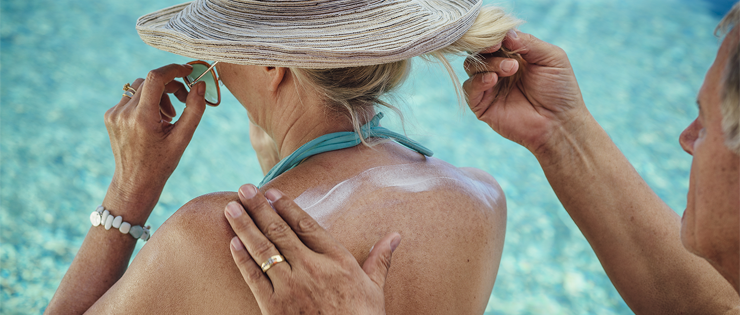
The Australian sunshine is a big part of our national identity. Aussies love to brag about our beautiful weather and we take full advantage of it by being outside as much as possible. Whether it be at the beach or in a park, we are often hit by the full force of the sunshine. While getting outside makes a lot of us feel better, we unfortunately expose ourselves to a lot of the harmful effects that come with too much sunshine. While getting outside is great, it is vital to remember to take care of yourself in the sunshine.
Sunshine is absolutely essential for a number of normal body processes such as making Vitamin D, setting our internal body clock and has been shown to be beneficial to our mood. The warmth of the sun though comes with ultraviolet (UV) radiation which can cause some serious problems for us.
UV radiation has two forms; UVA and UVB. UVB accounts for 5% of the UV radiation we’re exposed to and is associated with sunburn, increasing the amount of pigment in our skin and skin cancer formation. UVA makes up the remainder of UV radiation and is what causes aging in our skin, pigmentation and skin cancer. The sun’s warmth is not what causes skin problems, rather this ultraviolet radiation which is why even on a cooler day or in cloud cover, we still need to be mindful of being safe in the sun.
Sun exposure and sunburn makes us look older but it’s the prevention of skin cancer, including melanoma, that we really need to be concerned about. 2 in 3 Australian’s will be diagnosed with skin cancer and an estimated 1770 Australians die of melanoma each year.
The whole idea of being safe in the sun is to prevent the harms that come with sun exposure. Most Australians remember growing up with the ‘Slip, Slop, Slap, Seek, Slide’ message and that holds true still today. Happily, more people than ever are taking part in these behaviours but we still have a ways to go.
To protect ourselves from the sun, the first step is to wear sun protective clothing. Look for clothes that aren’t too stretchy and you can’t see through. Some outerwear designed specifically for sun protection carries a UPF (UV protection factor) to act as guide to how much protection it offers.
The next step is sunscreen, which should be worn whenever the UV radiation is above low but many people to choose to wear it whenever they are outdoors. Sunscreen should be at least SPF 30, meaning it blocks out 96.7% of UVB rays. Broad spectrum sunscreens block bothe UVA and UVB rays. Put on sunscreen 20 minutes before you’re outside and remember to reapply after sweating or swimming.
Hats offer a similar protection to wearing clothes in the sun and where possible, should shade your whole face, neck and ears. A broad brim hat is good for this reason. Sunglasses that offer UV protection are also an important part of protecting your eyes, which are also susceptible to the ill effects of UV radiation.
Where possible, avoiding the sunshine at its most powerful time should be done. You can relax under a tree or take an umbrella to the beach. Depending on where you live will depend on what hours to stay covered, but is generally centred around the middle of the day.
If you need more information, you can check out UV ratings in your area on the Bureau of Meterology website and get great sun protection information from Sun Smart.